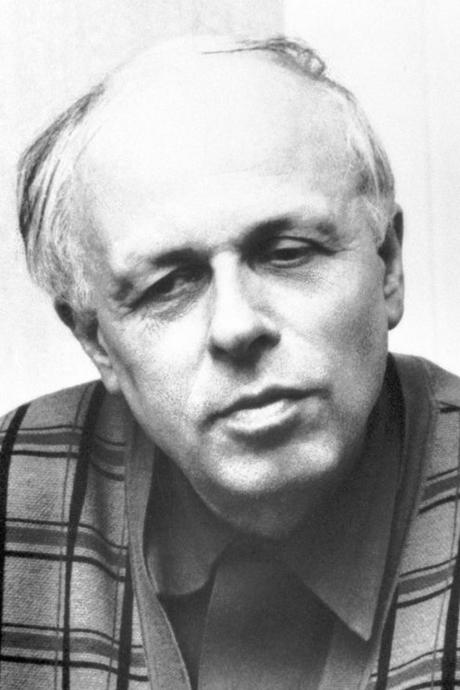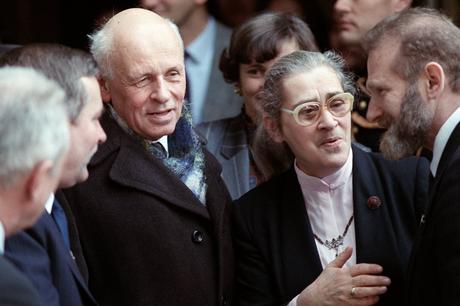
[Part 1 of 2]
Esteemed scientist, subject to ridicule in his home country, becomes outspoken opponent of nuclear weapons testing and wins Nobel Peace Prize with activist wife by his side. Without thinking twice, one might quickly assume this to be a short summary of the life of Linus Pauling, but it also suffices nicely as a capsule biography of the Soviet physicist and activist, Andrei Sakharov.
Indeed, the lives of these two men were striking in their similarity. Both were famous scientists – Sakharov a nuclear physicist and Pauling a chemist – and, following World War II, both became very outspoken critics of the nuclear arms race. Both were likewise criticized by their governments for their rhetoric and world view, and both eventually won the Nobel Peace Prize for their activist work. It is no surprise then, that the lives of these two men intersected more than once and that their relationship seemed to be based on a mutual understanding that their lives were unique, yet in some ways intertwined.
Andrei Dmitrievich Sakharov, born in 1921, spent the early chapters of his scientific career advancing research that directly led to the development of the Soviet hydrogen bomb. Regarded to be the “great equalizer” in the arms race against the United States, the first successful H-bomb tests were celebrated as a significant milestone within the Soviet Union, and Sakharov’s contributions to the project led to his receiving multiple accolades from Soviet leadership, including both the Lenin and the Stalin prizes.

As time moved forward however, decorations of this sort did nothing to quell Sakharov’s growing concerns about nuclear weapons and the threat that they posed to world safety. Sakharov soon channeled his worry into activism and protest, often rallying around the cause of nuclear disarmament. During this period, the recently widowed Sakharov also met his second wife, Yelena Bonner, who was an activist in her own right. The couple remained married and worked together until Sakharov’s death in 1989.
Sakharov’s protests were not always about nuclear weapons; he was also very concerned about human rights violations and was not shy about vocalizing his opinions. These activities were not embraced by the Soviet regime – outspoken criticism of the government was never welcome in the USSR – but for a time Sakharov’s voice was not entirely silenced by the government, probably because of his well-established prominence on the global stage, which included his receipt of the 1975 Nobel Prize for Peace.
Official tolerance had its limits though, and when Sakharov protested his country’s invasion of Afghanistan in 1979 he had crossed the proverbial line. Within a year, and despite receiving public support from respected colleagues including Nobel laureate Alexandr Solzhenitsyn, Sakharov was banished from his Moscow home and exiled to the city of Gorky, which was then a closed city to foreigners, and is now known as Nizhny Novgorod. Frequent reminders of governmental censure and dissatisfaction followed from there, including restrictions on telephone and visitor access, unannounced raids of his apartment, and force-feedings during hunger strikes.
Nonetheless, Sakharov endured and managed to find ways to spread his message around the world. Eventually, in 1986, under the promise of glasnost and perestroika, Soviet Premier Mikhail Gorbachev freed Sakharov from exile and allowed him to return to Moscow. Sakharov died just three years later at the age of 68.
Andrei Sakharov’s life was punctuated by moments of great passion and defined by an unbreakable determination. Throughout all of the hardships that he endured, he never wavered in his dedication to the causes that he believed in, a trait that he had in common with Linus Pauling. But despite the many similarities that these two men shared, they did not formally interact with one another until the late 1970s, several decades after they had both begun to speak out against a common foe: nuclear weapons. Sakharov, it seems, was the first to reach out and initiate a relationship between the two men. The specifics of this connection will be explored in greater depth next week.
